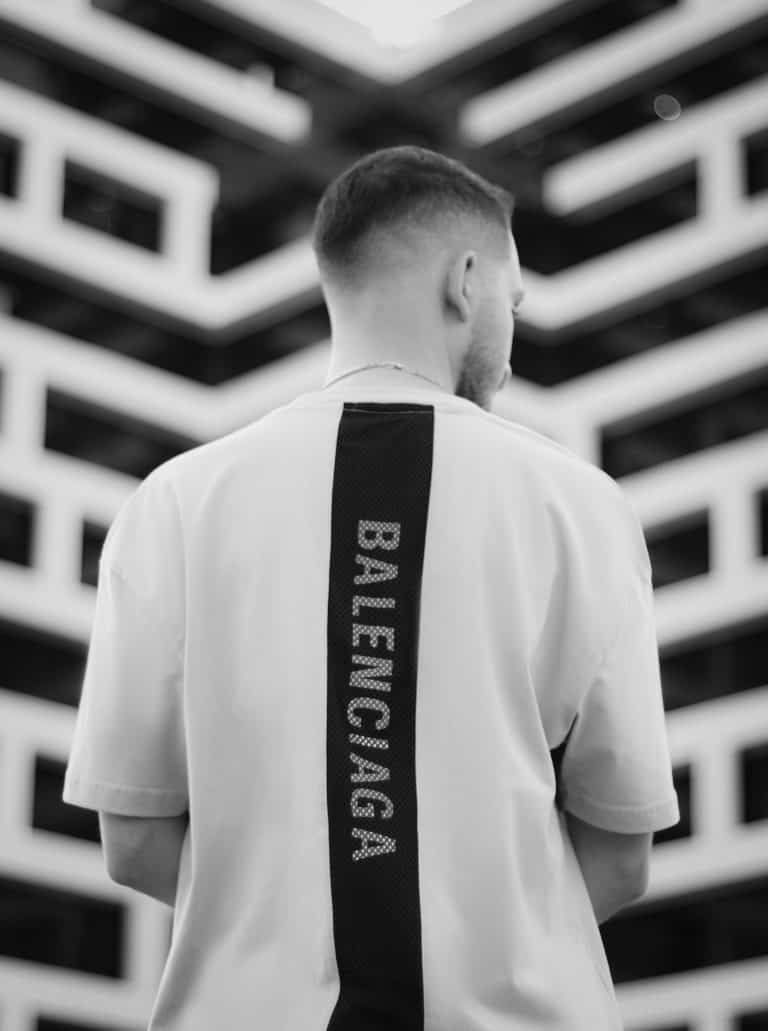Fashion has always been a constantly evolving business adapting to new trends. Givenchy and Balenciaga are some fashion houses that do this better than anyone else. Givenchy and Balenciaga, two of the most prestigious names in the fashion industry, have sensually reframed the codes of elegance, sophistication, and femininity in their men’s and women’s collections since they were established. Recognizing borrowed concepts from prominent design houses is vital while monitoring current trends in creativity. Contemporary businesses and creative directors draw inspiration from their forebears’ fabled pasts. Financial and artistic success can be explained by long-lasting trends and styles, which strongly influence contemporary culture. The detailed Givenchy vs. Balenciaga post overviews the two brands, their history, and marketing strategies.
Givenchy vs. Balenciaga- An Overview
As designers, Balenciaga and Givenchy significantly impacted 1950s high fashion by redefining how wealth, elegance, and beauty were portrayed during that decade. Both Demna Gvaslia and Clare Waight Keller, the current creative directors of Balenciaga and Givenchy, have pledged to carry on the legacy of their predecessors while elevating their respective labels’ status in the fashion industry.
Cristobal Balenciaga was hailed as a revolutionary when he first appeared on the Parisian couture scene in the late 1930s, and his reputation for meticulous tailoring skills grew throughout the 1950s. He was well-known for his straight, uncluttered lines in contrast to Dior’s “New Lookcurvy” body-conscious silhouettes. Evening gowns by Balenciaga were also notable for their swan collars and cropped cuffs, contrasting with the balloon jacket and cocoon coat.
Hubert de Givenchy, like Balenciaga, was a sought-after designer known for reinventing the concept of youth through refined elegance. In the 1950s, Givenchy and Balenciaga shared a passion for linear designs focused on a single, central line, and they became close friends. Cocktail and evening dresses with voluminous, lengthy skirts made of sumptuous fabrics were among his other notable creations, as were his tailored suits. Both designers have worked hard to improve their fabrics’ quality and color palette.
Givenchy vs. Balenciaga- History
This section outlines the history behind Givenchy and Balenciaga fashion houses.
Balenciaga History
Cristóbal Balenciaga, the mastermind behind Balenciaga, was born in Spain in 1895 and grew up there. ‘Eisa,’ short for his mother’s maiden name, was the name of his first haute couture house in 1917. He was forced to relocate to Paris in 1937 due to the civil war, where he founded a new store; Balenciaga was established here. The journalists and purchasers were blown away by the initial collection’s presentation. Balenciaga was well-known in the 1950s and 1960s for its use of large, outlandish shapes. The fluid lines, broad shoulders, and large volumes he employed were unlike those of previous designers. He was able to break into the mainstream of fashion at the time because of his designs’ wearability, precision, and appeal. The Cocoon coat, the Balloon skirt, and the Sack dress were all signature Balenciaga pieces. Unlike most other designers, Cristóbal didn’t begin his designs with sketches. He got right to work with the fabric and came up with outfits of this caliber. Fabiola De Mora y Aragón married King Baudouin I of Belgium in 1960, and Balenciaga designed her bridal gown. Cristóbal Balenciaga died in 1972 after relative inactivity following his heyday.
The Bogart Group took over Balenciaga House in 1986, and nothing transpired for a few years before that. As a creative director, Michel Goma was hired. He came up with the name “Le Dix” for his line of brightly colored ready-to-wear. When Josephus Thimister took over as creative director of Balenciaga in 1992, he boosted the brand to a high-end position. Balenciaga’s 1997 runway show was a disaster for him, despite his doing so.
Nicolas Ghesquière, who served as creative director from 1997 until 2012, was his successor. His best-known creations are Lariat, gladiator boots, and hyper-floral prints. He made a name for himself as a designer while working at Balenciaga. Kering bought the Balenciaga House during this time. Alexander Wang served as creative director from 2012 until 2015. His best-known creations are Lariat, gladiator boots, and the large and unique proportions of his large-floral print.
The house released his first ready-to-wear collection for the first time since his appointment as Balenciaga’s new creative director in late 2015. Deconstructed streetwear is the foundation of his label, Vetements. He took these concepts to Balenciaga through enormous jackets made of denim and ski gear that appear to have been deliberately worn off the shoulders. However, there was a reference to the past with this new technology. The collection was dominated by Balenciaga’s tailoring skills, with protruding shoulders running into exaggerated curving hiplines that began at the natural waist. Dissected hemlines and complementing one-line shift skirts were the next trends. Several exciting coats on display also toyed with the waistline, as Balenciaga used to do with dresses.
Givenchy History
After founding his own luxury house in 1952, Hubert de Givenchy unveiled his first collection, Les Séparables, which included raw cotton skirts and blouses with puffy sleeves. Givenchy’s debut collection was hailed by Vogue as a “great debut” and garnered rave reviews. The Bettina Blouse, a white shirt named after Bettina Graziani and painted by René Gruau, was part of the collection. With his first collection, Hubert de Givenchy became one of fashion’s most famous children, according to an article in the New York Times and an interview in l’Album du Figaro. Among the house’s models were Suzy Parker and Dorian Leigh, who served as inspirations for the brand. To create his stylish and casual designs, the designer used “shirting,” raw cotton comparable to pattern paper. Hubert de Givenchy debuted the first shirt dress in 1954, which evolved into the sack dress in 1957 under Givenchy’s direction. Givenchy Université, his first ready-to-wear collection, was produced in Paris using American-made machinery. He was the first high-fashion designer to do so.
During a charity dinner for the American Hospital in Paris in 1956, Cristóbal Balenciaga and Hubert de Givenchy showed their collections in New York. It was in 1969 when Hubert de Givenchy started his “Gentleman Givenchy” menswear label. On November 1st, the storefront on Avenue George V officially opened its doors. Givenchy developed his licenses in the 1970s to preserve his Haute Couture collections on the advice of Cristóbal Balenciaga. During this time, the House of Givenchy expanded its horizons to include shoes, jewelry, ties, tableware, furniture, and kimono creations. Hilton hotels worldwide, as well as an automobile, have interiors designed by Hubert de Givenchy (the Continental Mark V). When Riccardo Tisci became Creative Director of Givenchy in 2005, his dark, gothic designs quickly became noted for their lavish fabric, cut, and embroidery.
Givenchy’s influence may be seen in the recent Ready-to-Wear and Haute Couture collections for Spring/Summer 2016. Beads, feathers, lace, and skeletal lines defined the Ready-to-Wear dresses and masks, making them anything from simple. Deconstructed yet sharply tailored silky separates and the full-skirted, black evening attire might still be perceived as Givenchy’s preference for clean tailoring, luxury materials, and femininity. Elegant and refined cape lines that follow the contours of the shoulders and surround the body without the use of excess material or embroidery were reinterpreted for Haute Couture.
Clare Waight Keller was named Artistic Director of Givenchy, beginning May 2nd, 2017. In addition to the ready-to-wear and accessory collections for women and men, Waight Keller also designed haute couture. Claire Waight Keller designed Meghan Markle’s wedding gown, which she wore on May 19th to marry Prince Harry. The male collection calendar has been revived for the autumn/winter 2019 season, following the success of three successive combined presentations with the help of Keller.
Givenchy Marketing Strategies
Givenchy had not invested heavily in marketing before William’s reign. However, the new creative director is steering the company in a new direction with innovative marketing campaigns.
Social Media
Givenchy uses social media as a cornerstone of its marketing strategy. The fashion label is extremely popular on social media platforms like Twitter, Facebook, and Instagram. Aside from that, the label regularly updates its YouTube channel with new videos.
The 4G Launch
Williams, the Creative Director of Givenchy, wanted to emphasize the hardware he claims was the inspiration for his latest collection. The unique approach to contemporary fashion embodied by the line, which straddles the line between ease and luxury, speaks volumes about its ability to bring together human feeling and technological progress. New ground is being broken for the label, and Williams is impacting the high fashion sector significantly.
Runaways
How designers showcase, their wares are often just as exciting as introducing new lines. In presenting the company’s lines, the creative director has developed a novel approach that keeps the focus squarely on the garments themselves. The dramatic tone set by William’s line called for something on the grand scale. The models paraded down a water-filled runway in a 50,000-capacity stadium. Only the moving models illuminated by a spotlight could be seen in the pitch-black stadium. Williams’s brilliant execution of the runaway was crucial to the line’s overall success.
Balenciaga Marketing Strategies
Balenciaga employs experts in the field of marketing to oversee the sector. By April of 2021, the group’s lineup was complete with the addition of Ludivine Pont. He was promoted from within Moncler to serve as Director of Marketing. This 30-year-old has been responsible for expanding the company’s brand and enhancing the customer service they provide.
The Simpsons
As part of its latest marketing push for the upcoming spring/summer 2022 collection, it has teamed up with The Simpsons. A special episode of the series was shown to all attendees of Paris Fashion Week to implement this promotional plan. TA screen was set up on the runway so fans could see their favorite Simpsons regulars like Marge, Lisa, Homer, Bart, and Maggie. Many other exciting people, like Marge’s sisters, Selma, Gregory the boss, and many others, also appear in the show. The collaboration’s main goal was to spread the word about the new collection via various online platforms. This is because it is among the most watched cartoons in history. After more than three decades on air, it remains a fan favorite. A strategy with this level of certainty is impossible to lose. That’s why so many brands use numbers in their marketing campaigns. Particularly now, when using social media is all the rage.
Disruptive Content
Balenciaga has used this tactic for marketing on multiple occasions. The fact is that most community managers use controversy as a way to quickly gain traction online and introduce a product that is sure to be well received by the target demographic. The company apparently plagiarized a souvenir to market a new $2,000 handbag. Even though Balenciaga was sued in New York City over the “market bags,” they have always been sold at the same price. There are benefits to operating under a unified brand.
Brand Influencers
The rise of influencer marketing has generated considerable discussion in recent times. This is why many high-end companies have started using this form of advertising. Kim Kardashian’s decision to wear all black to the Met Gala is seen as more of a marketing move than a fashion statement. Why? As it turns out, this influencer’s presence that day was instantly recognizable even though she has over 200 million Instagram followers. Balenciaga has capitalized on the fact that Kim will always be the center of attention no matter what she wears.
Closing Thoughts
It’s important to remember that creative directors at Houses like Balenciaga and Givenchy work in an environment passed down through generations of designers. This environment dramatically affects the economics of the fashion industry and the demand for luxury goods. Gvaslia and Tisci follow the lines that Balenciaga and Givenchy used to set themselves apart in the competitive fashion world. This clear connection between the founders’ effects is an important reminder that modern fashion is part of a long line of creativity and inspiration that is linked by a search for happiness and real beauty.







